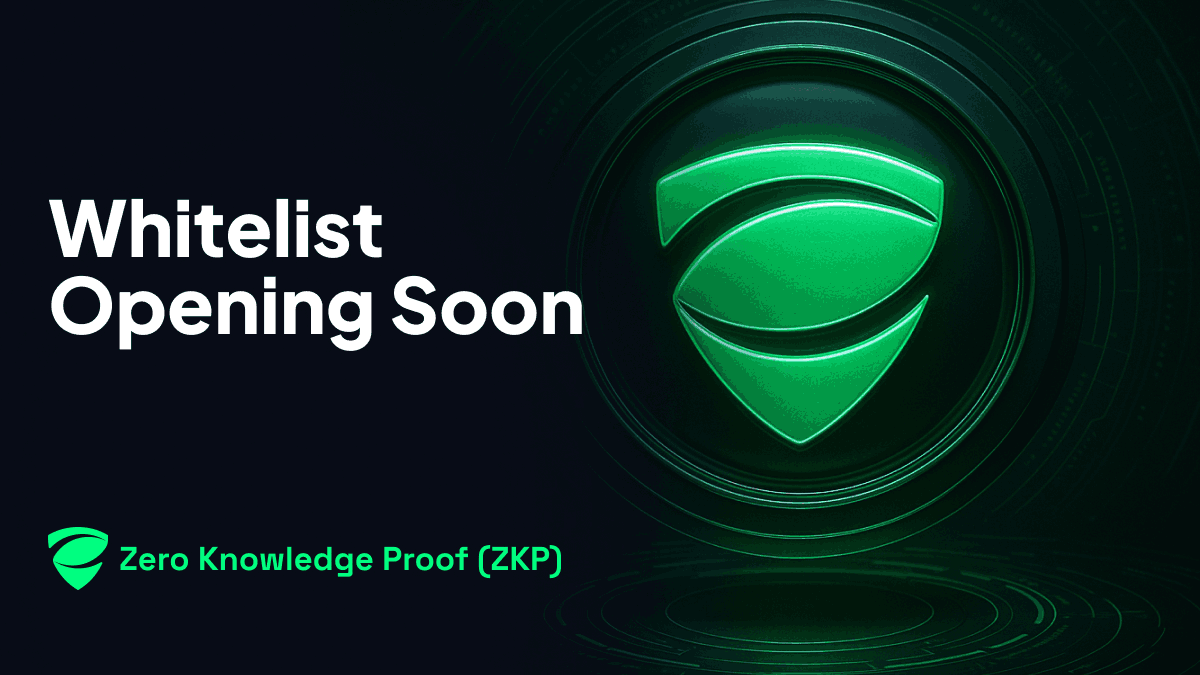x402 & ERC 8004 Narrative Research and Target Analysis
Identify the most noteworthy and strategic directions for x402/ERC-8004.
I. Major Events
• August 13, 2025 — ERC 8004 is officially proposed on the EIP platform, indicating the Ethereum community's exploration of standardizing Agent trust infrastructure.
• September 16, 2025 — Google releases the Agent Payments Protocol (AP2) announcement and announces the x402 extension/partnership with Coinbase, integrating stablecoins and crypto payments into the Agent payment system.
• September 23, 2025 — Cloudflare announces the joint launch of the x402 Foundation with Coinbase and incorporates x402 into its Agent SDK/MCP server.
• October 14, 2025 — Visa releases the Trusted Agent Protocol (TAP), clarifying its co-development with Cloudflare, and provides specifications and implementation examples on the Visa Developer Center and GitHub.
II. Narrative Breakdown
The prevailing market view is that "AI Agents are important economic entities of the future." This judgment is mainly based on their changing roles in economic activities, efficiency improvements, and the frameworks and visions established to capture and coordinate machine economic value. We elaborate from four perspectives below:
1. AI Agents will gradually replace humans and become new "assets"
In the entire economy, AI Agents are positioned as "assets that can automatically generate continuous cash flow"—although currently humans account for 100%, in the future, the proportion of Agents will increase and gradually replace humans over time. These assets can be tokenized, thereby establishing a decentralized incentive mechanism within the community. Entrepreneurs and the market believe that if these Agents have "strong economic capabilities" in the future, then by tokenizing and coordinating interests among participants, entirely new decentralized economic entities and investment models can be created.
2. Agent-to-Agent (A2A) collaboration is the most efficient business model
Collaboration and payments (A2A) between AI Agents are considered the "sexiest" and most efficient business model of the future—this collaboration model arises because complex real-world tasks require multiple agents to work together, similar to outsourcing mechanisms in real society. Through division of labor and collaboration, AI Agents can delegate tasks to other Agents and pay fees from their income, while blockchain offers the advantage of automating payment and information execution logic.
3. Standardization and value capture of the Agent economy
To address the shortcomings of Google's A2A protocol, proposal ERC-8004 introduces and extends three key on-chain registries to solve critical trust issues in the Agent economy:
1. Identity (Who am I): Solves the identity recognition problem for Agents
2. Reputation (Reputation system): Solves the "Why choose you" problem by introducing external reference standards and objective evaluations
3. Verifiability: Ensures the verifiability of Agent work
Such collaboration and standard-setting among Agents ensure "unified and market-standardized pricing," guaranteeing price and quality alignment.
4. On-chain financial infrastructure for the AI economy
As important economic entities of the future, AI Agents operate based on on-chain financial infrastructure: Agents have their own wallets and continuously accumulate multidimensional reputation on-chain. This native advantage, combined with the current cross-domain payment capabilities of stablecoins, efficiently solves the problem of high-efficiency, low-cost transactions between Agents, providing the necessary settlement and coordination capabilities for large-scale economic entities.
III. Glossary
In the glossary section, I believe it suffices to define the core concepts. For easier understanding, here we explain by comparing the evolution and structure of human society, where these four layers of collaboration form a complete machine society: with language, currency, and a credit system:
• A2A: Enables agents to "communicate," as communication is the prerequisite
• AP2: Enables them to "make payments," solving the payment issue
• x402: Enables them to "use new money (cryptocurrency)," integrating crypto asset payment modules
• ERC-8004: Enables them to "have identity and reputation," introducing an identity verification system
Given the relevance to the crypto market, we focus on and analyze x402 and ERC 8004, i.e., the value layer and the identity layer, in an attempt to find alpha opportunities for deployment.
IV. Focus Areas and Targets
Below, from a "bottom-up" perspective, are the most noteworthy and deployable directions on x402/ERC-8004: Base Layer → Protocol Layer → Application Layer
1. Base Layer
ETH
▪ Core of standard-setting & network effect moat: As the proposer and long-term promoter of ERC-8004, Ethereum continues its dominance in standards such as ERC-20 and ERC-721, with ecological inertia and network effect advantages.
▪ Strategic organization & direction: After organizational reform, the Ethereum Foundation established the dAI Team with the mission of "becoming the settlement and coordination layer for AI Agents and the machine economy," further strengthening its discourse power in identity, reputation, and payment standards.
▪ Long-term value logic: ETH plays a dual role as "standard setter + settlement layer fuel," serving as both the starting point for standard consensus and the fundamental value carrier for the machine economy.
BASE
▪ Leading the x402 technical standard: Backed by Coinbase's push from HTTP 402 → ERC-402, Base, as its on-chain extension, is the earliest testing ground for agent payments and machine settlements.
▪ Payment closed-loop advantage: As the native issuance chain for USDC, combined with Coinbase's fiat onramp and wallet system, Base has a complete closed-loop capability from "real-world payment → on-chain settlement."
▪ Strategic positioning upgrade: Base is shifting from a simple Ethereum L2 to infrastructure for the AI Agent Economy Layer, becoming the most likely main battleground for the first commercial implementation of the ERC-402 standard.
SOL
▪ Strongest execution efficiency and implementation capability: In scenarios such as micropayments, high-frequency communication, and automatic settlement, Solana's high TPS, low latency, and low gas costs naturally enable the execution and large-scale implementation of the x402 concept.
▪ ICM vision and machine nativeness: The Internet Capital Markets (ICM) vision proposed by the Anza team makes Solana the ideal platform for "native interaction between machines and assets," highly compatible with x402's payment logic.
▪ Leading ecosystem maturity: Over the past two years, Solana has formed a complete on-chain ecosystem loop—from asset issuance and automated trading to liquidity and credit management—already providing the practical foundation for supporting the Agent economy.
TAO (Bittensor)
▪ AI-native infrastructure layer: Bittensor builds a decentralized AI network, organizing model training, inference, and evaluation through subnets, forming the underlying computation and value settlement foundation for the machine economy.
▪ Model reputation and incentive system: Its subnet scoring mechanism naturally provides "identity + reputation + rewards" functions, echoing the reputation registry logic of ERC-8004.
▪ Machine payment and value capture closed-loop: The TAO token undertakes model invocation settlement, validation incentives, and governance functions, making it one of the earliest native assets to form an "AI-to-AI payment" closed loop.
KITE AI (not yet issued)
○ Agent model collaboration layer infrastructure: Kite AI aims to build a multi-Agent collaboration framework, enabling AI models, plugins, and APIs to complete task allocation and invocation in a unified environment, forming the "execution coordination layer" in the machine economy.
○ Verifiable execution and payment interface: The project integrates AP2/x402 protocols into its architecture, allowing every Agent invocation to record verifiable payments and task outcomes, positioning itself as a "settleable intelligent agent operating system."
○ Ecosystem embedding and tokenization potential: The KITE team is attempting to introduce the ERC-8004 identity mechanism, assigning reputation profiles to each Agent; in the future, it is expected to become the foundational protocol layer for the "Agent-to-Agent service marketplace" and realize a tokenized closed loop for task execution and settlement.
2. Protocol Layer + Application Layer
This layer is the key value capture area for x402 (value layer) and ERC-8004 (identity layer), responsible for the core logic of "making the machine society operational." The focus is on new protocols or established protocols empowered by new narratives.
$DREAMS - Daydreams
○ Overview: Daydreams.Systems positions itself as an ecosystem and lab for autonomous agents, forming a closed loop through three core products: the DAYDREAMS framework (building), DREAMS Router (payment), and LUCID platform (operation). The goal is to enable agents to plan and execute long-term tasks with minimal management.
○ Positioning: Agent framework + payment routing + operation platform
○ CA: Sol_GMzuntWYJLpNuCizrSR7ZXggiMdDzTNiEmSNHHunpump
○ Market Cap: $6.4M
○ Narrative Relevance: ⭐⭐⭐⭐⭐
$PAYAI - PayAI Network
○ Overview: PayAI positions itself as "payment infrastructure for the AI era," based on a Solana-first multi-network architecture, providing instant, code-level payment capabilities for autonomous AI agents and microtransactions. The core component is the x402 Facilitator, emphasizing millisecond-level settlement, low fees, and seamless integration for agents/applications.
○ Positioning: Payment/settlement infrastructure
○ CA: Sol_E7NgL19JbN8BhUDgWjkH8MtnbhJoaGaWJqosxZZepump
○ Market Cap: $5.1M
○ Narrative Relevance: ⭐⭐⭐⭐⭐
$MRDN - Meridian
○ Overview: Meridian provides "payment rails as a service," turning any website, API, dataset, or MCP server into a pay-per-use/pay-per-page resource with a single line of middleware code, following the standard HTTP/1.1 402 Payment Required. It is positioned as the "micro/nano service" settlement layer in the AI agent economy, emphasizing non-custodial, security, and cross-framework interoperability.
○ Positioning: Payment rails, AI Agent settlement
○ CA: Base_0xe57e601c06689d3e2bf7db7bebb14b4ff28400c6
○ Market Cap: $890K (Coingecko statistics, may vary)
○ Narrative Relevance: ⭐⭐⭐⭐
$SANTA- S.A.N.T.A
○ Overview: SANTA is a decentralized AI "virtual company" composed of multiple agents launched by @questflow, targeting automation of operations and research for crypto teams.
○ Positioning: AI Agents Swarm
○ CA: Base_0x815269d17c10f0f3df7249370e0c1b9efe781aa8
○ Market Cap: $3.1M
○ Narrative Relevance: ⭐⭐⭐⭐
$AURA - Aura AI Marketplace
○ Overview: AurraCloud centers on the x402 protocol, helping any AI agent, workflow, or API quickly monetize on-chain micropayments, and provides full-stack infrastructure from MCP hosting to smart wallets and dashboards.
○ Positioning: Platform infrastructure, payment protocol layer
○ CA: Base_0xdCaA5E062b2be18E52eA6ED7ba232538621dDC10
○ Market Cap: $1.3M
○ Narrative Relevance: ⭐⭐⭐⭐
$GLORIA - GLORIA AI
○ Overview: Gloria is an "AI-driven news intelligence platform," with the core goal of denoising, extracting, and instantly distributing "the most important signals for trading and decision-making" from market news. The product runs in parallel on terminals, bots, and APIs, covering simultaneous use cases for human users and autonomous AI agents, and is accompanied by tokens and a developer ecosystem.
○ Positioning: AI news intelligence
○ CA: Base_0x3b313f5615bbd6b200c71f84ec2f677b94df8674
○ Market Cap: $2.4M
○ Narrative Relevance: ⭐⭐⭐
$Virtuals - Virtuals Protocol
○ Overview: Virtuals Protocol builds a "productive AI agent society": each agent can autonomously provide services or products and conduct on-chain transactions with humans or other agents. All agents are tokenized as independent Agent Tokens, enabling capital formation, open participation, and incentive alignment; Virtuals Protocol has deeply integrated its ACP smart contract with the x402 payment protocol.
○ Positioning: AI Agent financing infrastructure
○ CA: Base_0x0b3e328455c4059EEb9e3f84b5543F74E24e7E1b
○ Market Cap: $469.32M
○ Narrative Relevance: ⭐⭐⭐⭐⭐
$EIGEN - Eigen Cloud
○ Overview: EigenCloud is a "verifiable cloud" based on EigenLayer, using EigenCompute/EigenAI to make AI and computing into verifiable services, and is working with AP2 and x402 to standardize agent payments and on-chain settlement.
○ Positioning: AI Agent verifiable cloud
○ CA: ETH_0xec53bF9167f50cDEB3Ae105f56099aaaB9061F83
○ Market Cap: $432.43M
○ Narrative Relevance: ⭐⭐⭐
$SWTCH - Switchboard
○ Overview: Switchboard positions itself as "everything can be an oracle," targeting the multi-chain ecosystem and providing dApps with verifiable real-time data, composable aggregation capabilities, and secure randomness. Its core selling points are speed, permissionlessness, and strong customization, aiming to allow developers to access any data source with minimal friction for contract logic.
○ Positioning: Decentralized oracle, Agent data service
○ CA: Sol_SW1TCHLmRGTfW5xZknqQdpdarB8PD95sJYWpNp9TbFx
○ Market Cap: $21.19M (FDV is $122.85M)
○ Narrative Relevance: ⭐⭐⭐
In addition to the emerging projects above, attention should also be paid to the recombination potential of traditional foundational protocols/public chains in the AI Agent narrative.
Examples:
Safe (multi-signature and treasury management) can evolve into the asset custody layer for "autonomous organizations or machine accounts" in the agent economy;
Superfluid (streaming payment protocol) is naturally compatible with continuous micropayments and service subscriptions in x402 scenarios;
Identity and credential protocols such as ENS / EAS / Galxe can provide ready-made reputation and verification modules for the ERC-8004 identity layer.
SUI (early AP2 participant), together with Questflow/Google, is testing the agent-to-agent micropayment model. Its object-oriented architecture makes account abstraction and parallel payments naturally suitable for AP2's multi-account authorization and budget control mechanisms.
V. Risk Warning
① High asset volatility: Currently in the early stages of narrative development, most projects (except for traditional ones) have small market caps, fragile liquidity, and high volatility risks.
② Team and governance risks: Some project teams are anonymous, governance is imperfect, and fund ownership is opaque, with high risks of manipulation and abandonment.
Thoughts: The current narrative of AI Agent / Machine Economy is still relatively abstract: although prototype standards exist, there is a lack of "token anchors/value drivers." First, the ecosystem is in the experimental phase, and the value capture mechanism for cash flow and fees is still difficult to assess, with the credible market size unclear; second, there is a lack of intuitive and usable products, making it difficult to form strong market consensus in the short term, so continuous attention is needed. Notably, the involvement of traditional giants such as Google, Visa, and Cloudflare provides external triggers for narrative breakthroughs.
Disclaimer: The content of this article solely reflects the author's opinion and does not represent the platform in any capacity. This article is not intended to serve as a reference for making investment decisions.
You may also like
Zero Knowledge Proof Whitelist Coming Soon: Where Builders Find Purpose in the Next Blockchain Era

JPMorgan Allows Bitcoin and Ethereum as Loan Collateral

Bitcoin and Altcoins Surge Amidst US CPI Drop and Rising Odds of Federal Rate Cut
Crypto Market Sees Green: Bitcoin Soars to $111,500 and Altcoins ETH, XRP, BNB Enjoy 3-5% Gains Amid Lower US Inflation

Selig CFTC Chair Appointment Signals Pro-Crypto Move by Trump
